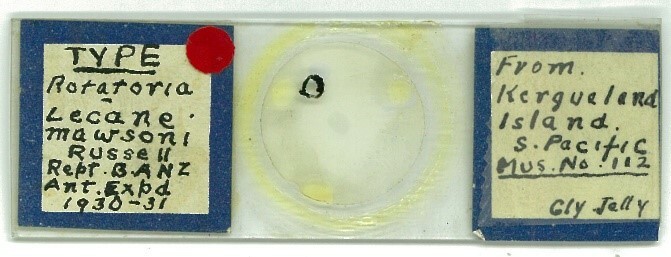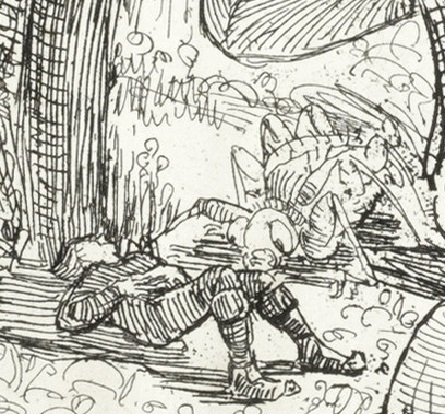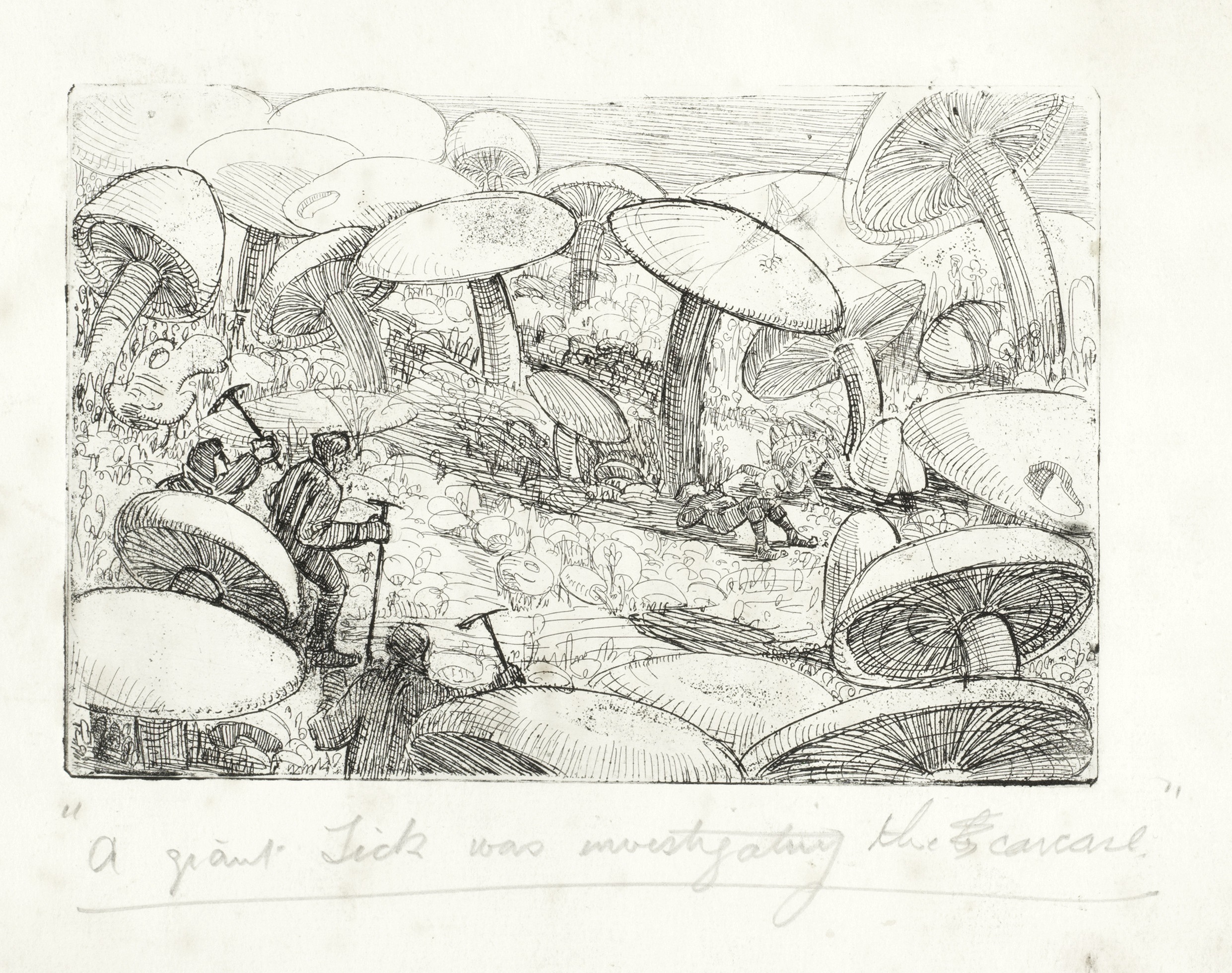Collectors of rare Antarctic memorabilia will have taken special notice of a recent Bonhams auction. A unique copy of a book containing Douglas Mawson’s sci-fi piece 'Bathybia' was up for auction in London. Associate Curator Matt Shaw explains the significance.
The Bonhams auction was exciting for people interested in rare books (and the vertigo-inducing prices that are paid for them). But what is more interesting is that it gives us more detail about an extraordinary fantasy that Mawson dreamed up during the ground-breaking Nimrod expedition to Antarctica in 1907–1909.

Mawson's fantastic piece of sci-fi, 'Bathybia' was written (and printed) in Antarctica in the winter of 1908. Mawson recounts a dream where the explorers descend 10,000 metres into an imaginary wonderland at the bottom of an abyss. Here the climate is mild and the luxurious vegetation is mostly enormous fungi. All the animals they meet are Antarctic ones, but mysteriously they are all gigantic. As well as giant mites (in reality, tiny eight-legged scavenging predators) and giant rotifers (microscopic animals that swim in water films), they encounter giant water-bears. Also called moss piglets, real water-bears are near-microscopic animals with long, plump bodies and eight legs which end in claws.
Mawson’s 'Bathybia' is rich in allusions to scientific theories. The title even seems to reference another 'fantasy', a famously incorrect description of a primordial organism, Bathybius which supposedly lived throughout the deep sea.
The explorers find a giant mite, frozen solid in ice. Later this specimen thaws out and attacks the party. This is an early description of how certain animals have adapted to survive freezing. The party also witness a giant water-bear tackling and subduing a giant rotifer. These incidents highlight one of the interests of this and other early Antarctic expeditions; how life manages to survive in the brutal Antarctica conditions.
The Nimrod’s biologist James Murray made many studies of water-bears and rotifers. A later scientific expedition which Mawson led pursued these interests yet further and collected many rotifers which Canterbury Museum holds. One of these slide-mounted rotifers is named after Mawson and this slide (below) is the ultimate reference specimen for this species.

Mawson’s 1908 story contains about four other encounters with giant mites that appear to try and eat the explorers. In one, the biologist in the party is sent out to search for food, but does not return. They find him lying senseless on the ground with a giant mite (which they called a tick) about to feed on him. The members of the expedition fend off this giant animal with ice-axes and save their comrade. The illustration for this scene was known to have been produced but none were thought to have survived in the original print run of this extraordinary book.

However, the copy recently auctioned at Bonhams contains this long-lost plate (below). The buyer now has a much better view of the monster mite in the illustration that is captioned 'A giant tick was investigating the carcase'. Partly because of this special illustration, the auction house was expecting a minimum price of £25,000 ($44,250). Sadly for public institutions, the fame and rarity of this book drove the price to £55,000 ($97,400) and into a private collection.

When acquiring items for the collection, museums as public institutions need clear reasons, especially when the item is as expensive as this. Canterbury Museum did not bid for the book as we already hold another copy and this particular expedition has somewhat indirect links with Canterbury and New Zealand.
Mind you, sometimes museums get lucky. After collectors have enjoyed their precious finds, they have been known to also discover enjoyment in gifting them to institutions that are dedicated to caring for such treasures in perpetuity.





